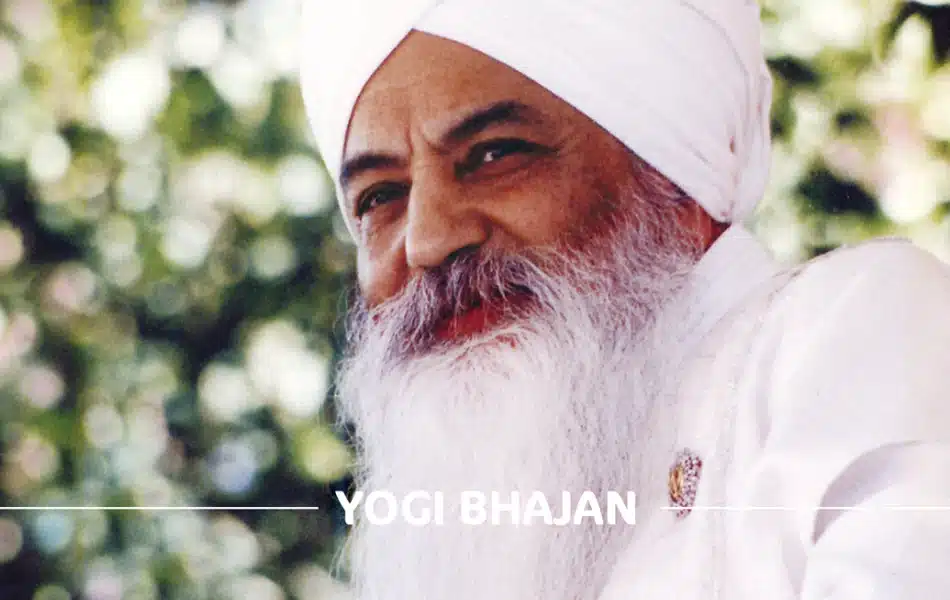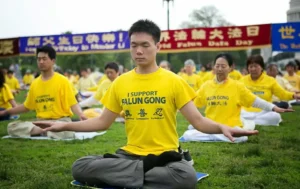Kundalini meditation is a powerful practice that has been used for centuries to awaken the dormant energy within us and help us achieve a higher state of consciousness. This ancient form of meditation is designed to awaken the Kundalini energy that lies coiled at the base of the spine, and to channel this energy up through the chakras, or energy centers, in the body. By doing so, Kundalini meditation can help us to release negative emotions, gain greater clarity and focus, and experience a deeper sense of peace and inner calm.
What is Kundalini Meditation?

Kundalini meditation is a spiritual practice that aims to awaken the dormant energy located at the base of the spine, known as Kundalini. Kundalini is believed to be a powerful and transformative energy that, when awakened, can lead to spiritual enlightenment, inner peace, and greater awareness.
The practice of Kundalini meditation involves a combination of breathing exercises, physical movements, meditation, and chanting, all of which are designed to help activate and raise the Kundalini energy up through the chakras, or energy centers, of the body.
Kundalini meditation is often associated with the Kundalini Yoga tradition, but it can also be practiced independently as a form of spiritual meditation. You have to note that while Kundalini meditation can be a powerful tool for spiritual growth, it should be practiced under the guidance of an experienced teacher or practitioner, as it can also be potentially dangerous if not approached with care and caution.
Origin of Kundalini Meditation

The origin of Kundalini Meditation can be traced back to ancient India, where it was a practice within the Tantric and Yoga traditions. The concept of Kundalini itself is mentioned in many ancient texts, including the Upanishads and the Yoga Sutras of Patanjali.
The practice of Kundalini Meditation was later popularized in the West in the 1960s and 1970s by Yogi Bhajan, who founded the 3HO (Healthy, Happy, Holy) organization and introduced Kundalini Yoga and Meditation to a wider audience.
Today, Kundalini Meditation continues to be practiced by people of various spiritual backgrounds and beliefs, both in India and around the world. It is often viewed as a powerful tool for personal growth and transformation, and is considered by many to be a path to spiritual awakening and enlightenment.
7 Chakras in Human Body
The seven chakras are energy centers located along the spine in the human body. Each chakra is associated with specific physical, emotional, and spiritual functions. Here is a brief description of each of the seven chakras:
- Root Chakra (Muladhara): Located at the base of the spine, this chakra is associated with our sense of grounding, stability, and physical survival. It is connected to the color red.
- Sacral Chakra (Svadhisthana): Located in the lower abdomen, this chakra is associated with creativity, sexuality, and emotional expression. It is connected to the color orange.
- Solar Plexus Chakra (Manipura): Located in the upper abdomen, this chakra is associated with personal power, will, and self-esteem. It is connected to the color yellow.
- Heart Chakra (Anahata): Located in the center of the chest, this chakra is associated with love, compassion, and emotional balance. It is connected to the color green.
- Throat Chakra (Vishuddha): Located in the throat, this chakra is associated with communication, self-expression, and speaking one’s truth. It is connected to the color blue.
- Third Eye Chakra (Ajna): Located in the center of the forehead, this chakra is associated with intuition, spiritual insight, and inner wisdom. It is connected to the color indigo.
- Crown Chakra (Sahasrara): Located at the top of the head, this chakra is associated with spiritual connection, divine consciousness, and enlightenment. It is connected to the color violet or white.
Each chakra can be balanced and opened through various practices, such as meditation, yoga, and energy healing, to promote physical, emotional, and spiritual wellbeing.
Benefits of Kundalini Meditation

Kundalini meditation offers countless benefits that go far beyond a meditation cushion. When energy is activated, it moves through the chakras or energy centers, resulting in a series of benefits that enhance both physical and mental health.
Enhanced Awareness and Mindfulness
At the core of Kundalini meditation is the cultivation of heightened awareness and mindfulness. This practice encourages you to delve inward, promoting a deepened sense of self-awareness and connection to the present moment. Such mindfulness can permeate all aspects of life, fostering a more contemplative and observant approach to daily activities and interactions.
Stress Reduction
Regular practice of Kundalini meditation can significantly reduce stress. By focusing on breath and movement, practitioners learn to manage their stress responses, leading to improved mental clarity and reduced anxiety. The deep relaxation techniques inherent in this practice can lower cortisol levels, the body’s stress hormone, providing a natural antidote to the stresses of modern life.
Improved Physical Health
Kundalini meditation isn’t just a mental or spiritual practice; it has tangible physical benefits as well. The various postures and breathing exercises can improve flexibility, strengthen the core, and stimulate vital organs. This not only boosts physical health but also supports the flow of energy through the body, enhancing overall vitality.
Emotional Balance
The journey through Kundalini meditation can be profoundly transformative, offering tools to navigate emotional landscapes with greater ease. By releasing blocked energy and confronting unresolved emotions, practitioners often experience improved emotional health, including reduced symptoms of depression and anxiety.
Spiritual Awakening
Perhaps the most profound benefit of Kundalini meditation is the potential for spiritual awakening. As the Kundalini energy rises through the chakras, it can lead to experiences of deep connection, expanded consciousness, and even states of bliss. This spiritual journey can foster a profound sense of interconnectedness with all beings and the universe itself.
Enhanced Creativity
By unblocking energy channels and fostering a state of inner harmony, Kundalini meditation can unleash creativity. Practitioners often find that their artistic expression deepens and becomes more intuitive as they align more closely with their true selves.
Community and Connection
Engaging in Kundalini meditation often brings a sense of community and belonging. Whether practiced in a group setting or individually, this form of meditation connects practitioners to a larger tradition and community, providing support and shared experience.
In conclusion, Kundalini meditation offers a wealth of benefits that extend far beyond the meditation cushion. By engaging with this practice, individuals can embark on a transformative journey that enhances mindfulness, promotes health, balances emotions, and fosters a deep sense of spiritual connection. It’s a holistic practice that nurtures body, mind, and spirit, offering a pathway to a more integrated and harmonious life.
How to Practice Kundalini Meditation for Beginners

As a beginner, it’s important to approach this practice with openness and patience, allowing yourself to gradually connect with the energy that resides within. Here’s a step-by-step guide to help you embark on this spiritual path:
- Create a Peaceful Space: Find a quiet and comfortable spot where you won’t be disturbed. You may want to create an ambiance that supports relaxation and focus, perhaps with dim lighting, candles, or incense. Ensuring your environment is conducive to meditation will help you tune in to your inner experience.
- Start with Basic Breathing Exercises: Before diving into more complex practices, familiarize yourself with simple breathing techniques. Deep, conscious breathing helps settle your mind and prepares your body for meditation. Try inhaling slowly and deeply through your nose, holding the breath for a few seconds, and then exhaling slowly through your mouth. Repeat this several times to center yourself.
- Tune In: Kundalini meditation often begins with the Adi Mantra, “Ong Namo Guru Dev Namo,” chanted three times. This mantra is used to tune in, connect to your higher self, and acknowledge the divine wisdom within and around you. It sets a sacred intention and marks the beginning of your practice.
- Awaken Your Energy: Kundalini meditation focuses on awakening the Kundalini energy at the base of your spine. Visualize this energy as a coiled serpent or a vibrant light. As you meditate, imagine this energy unfurling and rising through your body, energizing and balancing each chakra.
- Use Mantras and Mudras: Incorporating mantras (sacred sounds) and mudras (hand gestures) can enhance your meditation experience. The mantra “Sat Nam” (meaning “truth is my identity”) is commonly used in Kundalini meditation to help maintain focus and connect with truth. Mudras, like touching the index finger and thumb together, can help channel energy and increase concentration.
- Practice Kriyas: Kriyas are specific sequences of postures, breathing techniques, and sounds that work together to produce a particular effect. As a beginner, start with simple kriyas that are designed to awaken Kundalini gently. Look for beginner-friendly classes or videos guided by experienced practitioners to ensure you’re practicing safely and effectively.
- Close Your Session: Conclude your meditation with a moment of gratitude or a closing mantra. This helps to seal the energy you’ve cultivated and transition gently back into your daily life. You might feel a sense of peace, clarity, or heightened awareness after your practice.
- Be Patient and Consistent: Kundalini meditation is a profound practice that unfolds over time. Be patient with yourself and maintain a consistent practice. Even just a few minutes a day can have a significant impact on your well-being and spiritual growth.
- Seek Guidance: If you’re serious about deepening your Kundalini meditation practice, consider seeking out a qualified teacher or joining a community. They can provide guidance, support, and deeper insights into the practice.
Remember, the key to successful Kundalini meditation practice is consistency. Try to practice regularly, even if it’s just for a few minutes each day, and be patient and kind with yourself as you explore this powerful practice. It is also recommended to practice under the guidance of an experienced teacher or practitioner.
Risks of Practicing Kundalini Meditation
While Kundalini meditation offers numerous benefits and can be a deeply transformative practice, it’s also important to acknowledge and understand the potential risks, especially for beginners. This awareness can help you approach the practice with respect and caution, ensuring a safer and more beneficial experience.
- Overwhelming Energy Experiences: Kundalini energy is powerful and, when awakened, can lead to intense physical and emotional experiences. Some practitioners might feel overwhelmed by this energy surge, experiencing sensations like heat, involuntary movements, or profound emotional releases. It’s crucial to advance gradually and not force the awakening process.
- Emotional Upheaval: As Kundalini energy moves through the chakras, it can unearth suppressed emotions or unresolved issues. This process, while ultimately healing, can be challenging and may bring about emotional turmoil or heightened sensitivity. It’s important to have support and grounding practices in place to navigate these experiences.
- Physical Reactions: Some individuals might experience unusual physical sensations or symptoms, such as tingling, shaking, or spontaneous postures or movements. While these are typically harmless and temporary, they can be unsettling for the unprepared. Practicing in moderation and under guidance can help mitigate these effects.
- Spiritual Emergency: In rare cases, intense or improper practice of Kundalini meditation can lead to what is sometimes called a “spiritual emergency,” where an individual may feel detached from reality or experience profound existential crises. This state requires compassionate support and, often, professional guidance to navigate safely.
- Lack of Qualified Guidance: With the popularity of Kundalini yoga and meditation, there’s a risk of engaging with instructors who are not adequately trained or experienced. Learning from unqualified sources can increase the likelihood of misinterpreting the practice or encountering difficulties. Always seek out reputable teachers with proper training and experience.
- Neglecting Physical Limits: Kundalini meditation can involve physical postures and movements. It’s important to respect your body’s limits and not push through pain or discomfort. Ignoring your body’s signals can lead to strain or injury.
- Insufficient Grounding: Given the potent and elevating nature of Kundalini energy, it’s essential to maintain grounding practices. Neglecting grounding can lead to feeling spacey, uncentered, or disconnected from everyday life. Integrating grounding activities, like walking in nature or mindful eating, can help balance your energy.
To mitigate these risks, approach Kundalini meditation with respect, patience, and awareness. Start slowly, be mindful of your body and emotions, and seek guidance from qualified teachers. Remember, the journey of Kundalini awakening is profound and can be incredibly rewarding when approached with care and consciousness.
Some Kundalini Meditation Centers Around The World

Here are some Kundalini meditation centers around the world:
3HO Foundation: This non-profit organization offers Kundalini Yoga and Meditation programs in the United States and around the world.
Karam Kriya School: This international school offers Kundalini Yoga and Meditation teacher training programs and workshops in Europe, South America, and Asia.
Golden Bridge Yoga: This Kundalini Yoga and Meditation center is located in Los Angeles, California and offers classes, workshops, and teacher training programs.
Sat Nam Yoga Chicago: This Kundalini Yoga and Meditation center is located in Chicago, Illinois and offers classes, workshops, and retreats.
Yoga West: This Kundalini Yoga and Meditation center is located in Los Angeles, California and offers classes, workshops, and teacher training programs.
Kundalini Yoga East: This Kundalini Yoga and Meditation center is located in New York City and offers classes, workshops, and teacher training programs.





